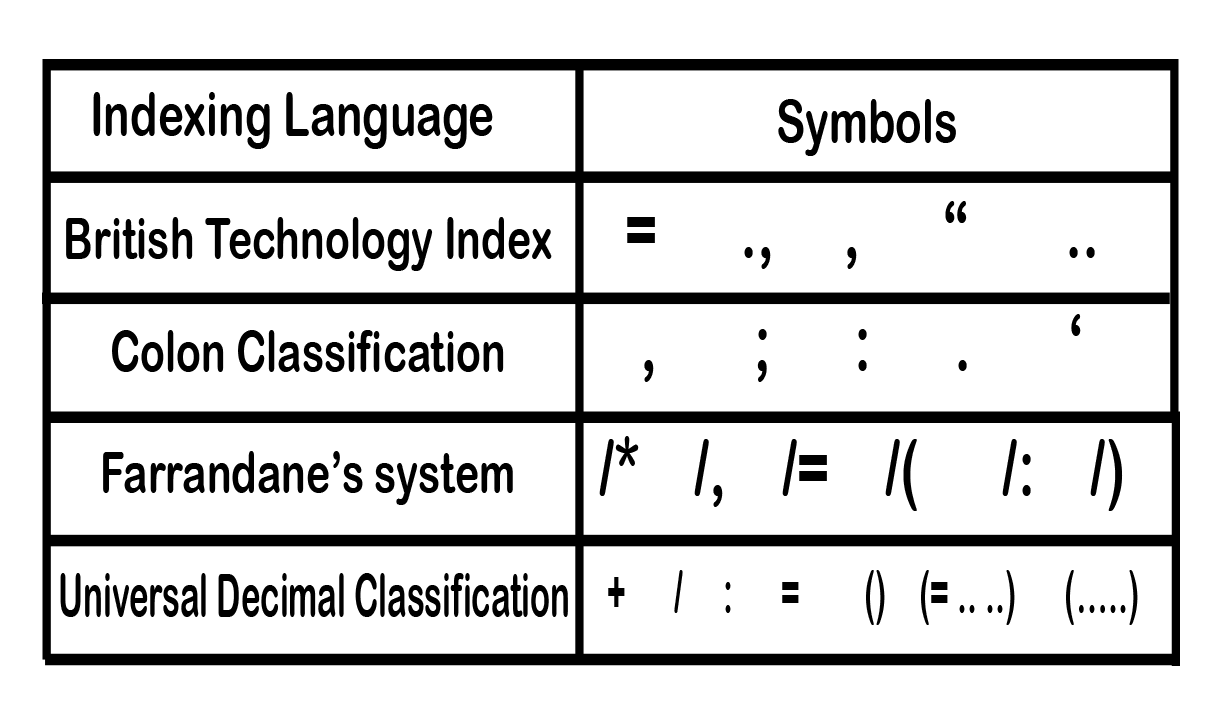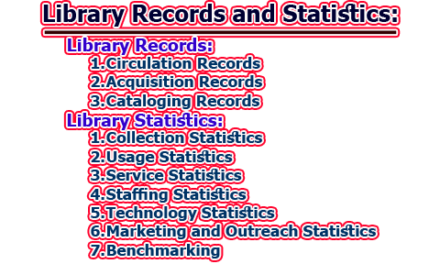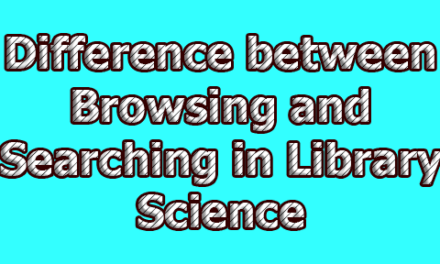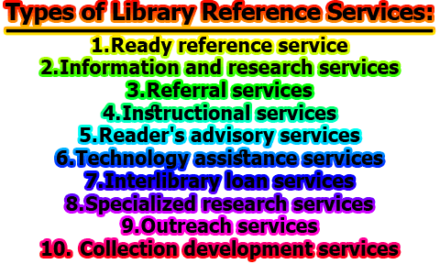Language is a means of communication and thinking for the dissemination of information and to the extent the creation of it. In indexing, language plays an essential role in information organization and documentation. However, it is not a language that is the object of study, but rather the use of language to formulate and communicate ideas and opinions. A study of the salient features of the language is helpful in the design of information storage and retrieval systems in general and indexing systems in particular. In the rest of the article, we are going to know about types of Indexing Language and their characteristics
Definition of Indexing Language:
“Indexing languages are a subset of natural languages. These languages (used to describe documents) are the parts of Information Science and Technologies. The goal is to represent information in such a way as to improve the retrieval of relevant documents” (Jorge Morata)
“Indexing languages are a proper subset of context-sensitive languages. They qualify as an abstract family of languages and hence satisfy many closure properties” (Wikipedia)
“It is the process of creating an index for purpose of representing and providing access to information object” (unt.edu)
“Indexing language is a set of items and devices for handling the relationships between them in a system for providing index description. Indexing language is also referred to as retrieval language” (SlideShare)
From the above definitions, we can say that indexing language is an organized list of pointers or access points to concepts and items in collection or document.
Types of Indexing Language:
There are several types of Indexing Language. Some are given below;
- Assigned Term of Indexing Language: In an assigned term of indexing language, indexer select terms or terminology on the basis of subjective interpretation of the document and follow some international standards. The indexer first determines the subject matter of the document at hand and then the assigned descriptor from a controlled vocabulary.
- Derived Term of IL: When an indexer prepares an index by using the author is known as a derived term of indexing language. All the descriptions are taken from the documents itself. Sometimes it is called natural language or free text indexing. As far examples; author index, citation index.
- Free Indexing Language: There is another type of Indexing language and it is called free indexing language, where indexer follows his own designed methods when indexing.
Characteristics of Indexing Language:
Indexing language is designed for a special purpose. Besides being a vehicle of communication of ideas it has to perform some special characteristics. Following are some characteristics of IL:
- Vocabulary Control: Coming to the semantic aspect of indexing we are to consider the size of vocabulary and devices for vocabulary control vocabulary of indexing language must be precise and exact. A complete one to one relationship between the concepts and terms should be established. Synonyms, homonyms, homographs, etc. are controlled in indexing language. Out of synonyms, only one term is accepted in indexing language and this is used in the subject description and file organization. In a classification scheme, synonyms are guided to the notation, allotted in the scheme for the concept.
- Co-ordination of Concepts: Specifying a concept with a particular term, out of available synonyms, does not solve all the problems in indexing. Most of the documents of the present-day cover compound subject of the document can be represented not by a single term but by co-ordination or combination of a number of items. A subject class generated by co-ordination of two or more terms, representing different concepts will differ from the classes represented by the individual terms or by the terms in some other combination.
- Sequencing of Terms: The co-ordination or combination of terms raises the problem of the sequencing of terms. This sequencing or ordering of terms is very important in indexing. The four terms a, b, c, d may be arranged in 4 or 4.3.2 or 24 possible ways. To solve this problem indexing language has made the provision of relational symbols known as role operations, role indicators, categories, etc. in different systems. Dr. S. R. Ranganathan introduced different punctuation marks among the Fundamental Categories (PMEST). Similarly, differential punctuation marks are being used in CTI to show the correct relationship of the terms.
- Syntax of IL: The importance of the sequencing of terms is accepted in all indexing languages. But the rules prescribed by them for the ordering of terms differ. The three categories concrete, process, and place as suggested by Kaiser are not sufficient enough to represent the composite subject of modern times. Dr. S. R. Ranganathan went deep into the problem and came out with his idea of five Fundamental Categories like Personality, Matter, Energy, Space, and Time or in Short (PMEST). This citation order of (PMEST) represents decreasing concreteness of the concepts in a document. E.J. Coates, the author of subject catalogs has prescribed and applied for another citation order according to this device is Things-Part-Materials-Property-Action. Thus a document on ‘Roofs of wood’ will be represented as Roofs: Wood following ‘Thing’ Material sequence. A new approach to the subject formulation of documentation has been provided by J. E. L. Farradane. He below nine types of relationships like association, comparison, concurrence, dimensional, distinctness, equivalence, etc. have been recognized in this device. The syntax of PRECIS, initiated by Derek Austin, is governed by the role operators. The role operators have equipment of (0-5).
- Rotation of Component Terms: Rules of the syntax of indexing language help us to formulate subject representation of a document. But in a linear representation like this, index statements can provide only single access in the searchable index file. To overcome this limitation, indexing languages have introduced a mechanism of rotation of components terms. The rotation is carried out in such a way that each of the component terms is placed at the privileged position on the search line as the lead term. The rotation of component terms is a special feature of indexing language.
- Syndetic Devices: Indexing language is an artificial one because of this artificiality the user needs guidance on how to use it. This guidance to users is provided in indexing language with the help of various types of syndetic devices. These include guides, cross-references, glosses, the invention of headings, introduction to indexes, etc.
- Relational Symbols: In a natural language correct relationship between two or more terms can easily be established with the help of preposition, conjunction, etc. Thus, photographs of albums and albums of photographs convey different meanings. This differentiation is possible with the help of preposition, conjunction, etc. This facility is absent in an indexing language, which is an artificial one. Some of the relational symbols used in different indexing languages are mention in the following figure:
So, we can say that IL analysis is necessary for the design of information retrieval systems in general and indexing systems in particular. It would be helpful in incorporating the required features thought not exactly but at-least analogically in the indexing system.

Assistant Teacher at Zinzira Pir Mohammad Pilot School and College










